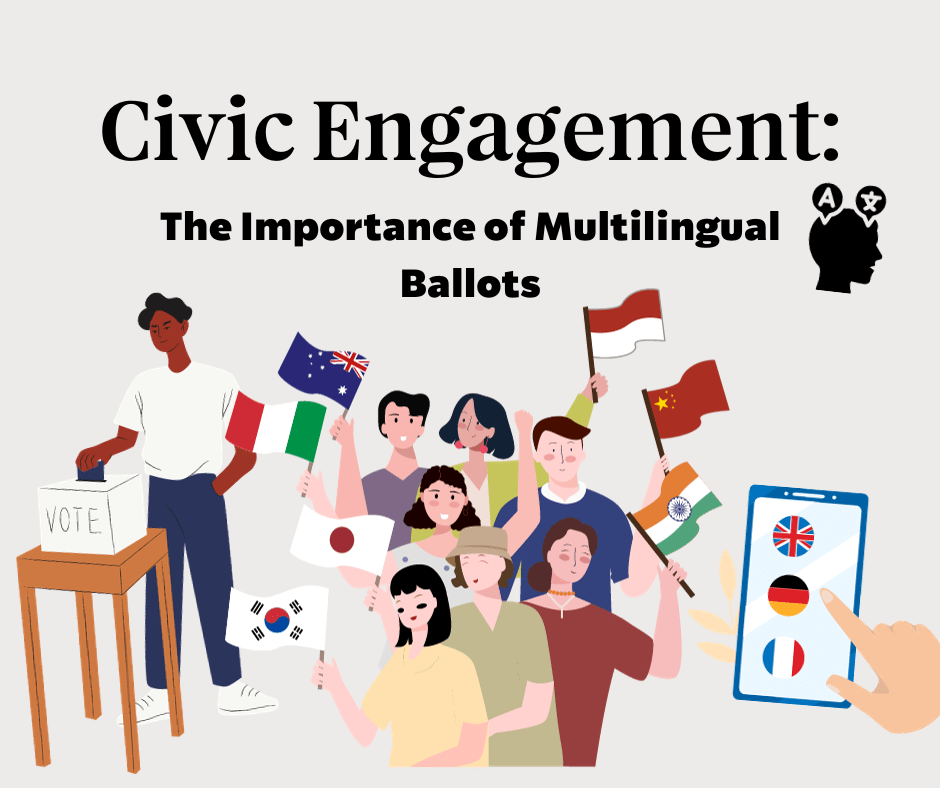
The Importance of Multilingual Ballots
Does your county have multilingual ballots?
What are multilingual ballots?
As America becomes more diverse, it's crucial to ensure everyone can join the democratic process with multilingual ballots. Read on to learn why designing ballots, election materials, and voting processes in different languages is essential for an inclusive and accessible election system.
Voting Rights Act
-
According to Section 203 of the Voting Rights Act, if more than 5% of a county's voting-age citizens struggle with English, it is mandatory that election-related documents are translated into the specific language of the applicable minority group. Many counties may also choose to include more languages if there are growing language communities.
- However, the 2021 Census showed that out of 2,920 counties and 5,120 minor civil divisions, only 331 jurisdictions are legally mandated to provide language assistance to specific groups, which make up just 4.1%. Section 203 accommodations have also remained unchanged despite the country's increasing diversity, excluding languages such as Haitian Creole, Russian, and Arabic.
Benefits of multilingual ballots
In the 2020 election, about one in ten eligible voters were immigrants. This shows how important it is to meet different language needs. Having ballots in multiple languages matters because:
- Democratic inclusivity: Including multiple languages in ballots fosters inclusivity by eliminating language barriers, encouraging broader community participation and helping Limited English Proficiency (LEP) constituents feel more connected to the government.
- Clarity in terminology: Multilingual ballots clarify American-specific terms that might be challenging to understand in other cultures.
- Social cohesion: Including diverse languages in election materials promotes social unity by recognizing and respecting everyone's cultural backgrounds.
Ways to improve election system access
- Consistent language placement: Ensure simple language placement across materials to help people quickly find their language.
- Natural-sounding translations: Produce translations that sound natural, reflecting linguistic nuances to resonate with the communities they serve.
- Use of recognizable icons: Use universally recognized icons, like arrows and symbols.
- Human-centered translation: Engage real people instead of automated translation engines to guarantee accurate, reliable, and culturally sensitive information.
- Bilingual workers at polling places: Hire bilingual workers at voting spots to assist people who don't speak English well, so they feel more comfortable asking questions and taking part.
- Cultural framing: When translating election materials, consider the cultural context and perspectives of diverse communities instead of solely focusing on American values.
Contact your state to boost multilingual ballots and enhance election access for non-English speakers!